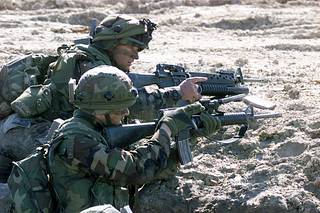The MILES gear system was first introduced to the US Army in the late 1970s, long before Fort Jackson Soldiers were conceived. Although it has enjoyed popularity in the Army for many years, there have been a few changes and external influences. For one, new training initiatives have increased the demand for MILES gear.
Army miles equipment setup
The Army is taking a back-to-basics approach to combat training with the introduction of new gun-mounted lasers. This new gear, known as the MILES system, is intended to mimic the effects of weapons and firing capabilities. It is equipped with sensors that detect laser “bullets” and keep track of damage assessment. The system also includes audio cues when simulated rounds approach the soldier’s location. A high-pitched sound warns the soldier that a round has been fired.
Army mile equipment cost
When you want to purchase military gear, cost is a big factor. While the cost of individual pieces of gear varies, the overall cost per person is more than double that of a standard pair of sneakers. Some items are only available to unit leaders, and they cost a lot more than items for regular soldiers.
Miles gear instruction manual
The Army’s MILES systems are the primary training devices for force-on-force training at Army home stations. However, the Army’s training battlefield is in need of greater performance levels. The existing Basic MILES technology is not capable of recording event data at the required fidelity and does not support After Action Reviews.
Militarized MILES gear for sale
Military MILES gear is available for sale. They are not designed for close-combat but are fine for large units that fight tanks. However, they are not as effective for simulated CQB. This is why the military is following LE’s lead and is using Sims for CQB training. In fact, the Marine Corps and Navy recently put out a large contract for Sims. In addition to Sims, the military also sometimes uses MILES gear together with them.
MILES gear for sale is designed to simulate simulated force-on-force exercises in the field. The devices simulate the effects of real weapons systems, such as the M1 Abrams tank and the Bradley infantry fighting vehicle. They can also imitate the effects of weapons like rifles, machine guns, and controller guns that are used to destroy armor.
Unlike conventional grenades, the military also sells gear that can be used in combat. For example, MILES gear can simulate the use of lethal lasers and can be worn by soldiers. The equipment is made to mimic the actual range of a combat situation. It is highly effective for training soldiers to use weapons effectively.
Does the Army still use MILES gear?
MILES gear was used by the Army until its replacement came along. Today, the Army uses DISE, or Deployable Instrumentation System Europe, which was designed for EUCOM forces like the Seventh Army Joint Multinational Training Command. However, these units have a completely different budget than the U.S. Army Training Command, and thus the new equipment was not yet ready. However, the Army did issue a solicitation to upgrade its program in 2015. Saab Technology is the contractor for this program.
A MILES is a training device that simulates real-world combat situations. A soldier wearing the gear must learn to distinguish between hostile and friendly forces. The training is performed by firing a coded laser beam at a target. The target is detected by the device, which records hits and triggers a beep. This helps the soldier develop the right reaction and enhances realism.
MILES was originally introduced by the U.S. government for tactical engagement training. It has been used by the Army for years. But now the Army wants to replace it. However, it must also find a way to retain it. MILES has been used by more than two hundred thousand U.S. soldiers since 1980. The new system is much lighter than the old one and weighs less than two pounds. The early versions of the system were five to seven pounds.
Army mile gear cost
The Army MILES gear is used for training in a combat scenario. These devices fire lasers with coded information and record hits. The realism of these devices is enhanced by the use of blank firing attachments. The cost of army MILES gear depends on the features and type of gear. The latest generation of MILES gear comes with better battery life and reduced power consumption of the devices’ components.
What does MILES gear stand for?
The MILES (Multiple Integrated Laser Engagement System) equipment enables soldiers to exchange shots without having to use live ammunition. The system consists of a laser module and a harness. The laser is mounted on the soldier’s rifle, and the harness contains receivers. When a soldier pulls the trigger, the laser hits the receiver and records the hit. MILES systems can be mounted on vehicles as well, including armored personnel carriers.
The training process for MILES gear is long, but the gear is extremely useful. A training soldier has to differentiate between friendly and hostile forces, and MILES gear can make this process easier. The system relies on muscle memory, so it is important for soldiers to develop the proper reactions. It also helps to have a real-world scenario so soldiers can develop the right reactions.
MILES is the standard training device for force-on-force training at Army home stations. However, the training battlefield of today requires higher performance and fidelity from training devices. The existing Basic MILES technology cannot support this level of fidelity and does not reliably record event data required for After Action Reviews.
